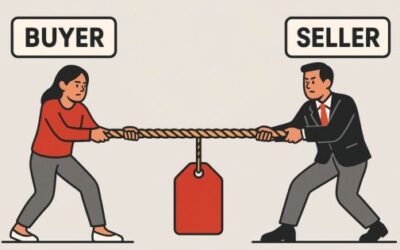Growth is what it’s all about in the world of business, especially in SaaS and technology. But growing effectively is key to successfully scale a sales team.
We all want to get big. We all want to grow up and be the big girls or boys on the block, right?
Growth is what it’s all about in the world of business, especially in SaaS and technology.
Take one look at TechCrunch, Mashable, and every other tech publication, and it’s clear. Growth is the goal.
But there ain’t no growth without a highly functioning sales team.
I’m not gonna start with how to hire more sales people or how to add new processes, or how to change the culture or hire a CRO or, or, or. I’m gonna start in a place you’re probably not expecting.
If you are trying to scale a sales team or organization, the first question that must be answered is, why?
Why do you want to scale the sales team?
I know what you’re thinking. What kind of a question is that? The answer is obvious. You want to scale to grow faster, make more money, get more clients, etc. Sadly these are the wrong answers, and it’s these answers that get too many companies in trouble.
The reason for scaling a sales team can NOT because you WANT to grow. It must be because you can no longer grow as you are currently structured. Leadership should only be considering scaling if they can no longer grow or they anticipate they will no longer be able to grow in the current environment.
(For the sake of clarity, I’m defining scaling a sales organization as a fundamental restructure to accelerate revenue growth. I don’t consider simply hiring a few more sales people as a scaling.)
In business, hopefully there comes a time when your current structure and way of going to market no longer works. You are unable to drive the leads, close the deals, penetrate the territory, capture new industries, etc. Your current sales environment is tapped out or getting tapped out, and the desired growth can not be achieved if you don’t change.
This is the only time scaling should be considered and herein lies the first lesson.
UNDERSTAND WHY YOU ARE NO LONGER ABLE TO GROW
I know it seems like a rather simple request, but you’d be surprised. Scaling a sales organization requires that you know why your current sales structure and the team are unable to continue growing and what needs to change. This question must be addressed first. It needs to be answered with tremendous clarity and thought.
Until you know why your sales team’s growth has stunted or will be tapped out soon, you will not know why you need to scale.
There are a few reasons why sales teams need to scale because they’ve run out of runway.
The Key Reasons for Stunted Sales growth
When a sales team taps out and is unable to grow any further, it can typically be attributed to a handful of key elements. Understanding which of these your organization is struggling with allows you to restructure the team for growth properly and not exacerbate the problem.
The market has changed.
Market changes can come in many different forms: increased competition, less greenfield, governmental mandates, market maturity, commoditization, increased options or solutions and more. When a market goes through a fundamental change, existing sales forces are rarely able to maintain their momentum as they were not designed to sell into that type of market.
This can be seen in startups who are first to market. With a heavy emphasis on first to market advantages, these companies leverage relationships, word of mouth, press, investors and the founders to drive much of the leads and revenue. The sales team has to do very little selling. There are traditionally more leads than they can handle and there is little competition. In these selling environments, education is a critical element in the sales process.
The market is not educated on the product or service and therefore educating prospects is key. This works for the first year or two; however as time goes on, new players enter the market, buyers are more familiar with the product or service and need less education, low hanging fruit or early adopters have already moved, and now late adopters and laggards represent the greatest opportunities.
Selling to laggards and late adopters in a market with more competition and less differentiation is a VERY different sales environment than what the sales organization was selling into for the first few years. Any scaling effort must align with these market changes, or failure is imminent.
Understanding these changes and how they affect your go to market will be the cornerstone of any successful sale scaling effort. If the market has changed and it’s the reason you need to scale, know exactly how it’s changed and why.
Spit and Glue
Sales teams are often put together with one thought in mind: get as much business as possible as quickly as possible. Therefore, not much thought was given to long-term viability.
Usually led by the CEO or a founder, the sales team is nothing more than a handful of hired guns who have been pounding on doors working hard to bring in every opportunity they can. This works for only so long. Eventually, the organization is going to stall, lacking leadership, repeatable processes, training, coaching, etc.
Sales teams put together with spit and glue can drive revenue to about 5 million, depending on the type of product or service. After that, if they want to scale, they will have to make substantial changes.
If your team was put together to quickly generate revenue, getting past five million will take making significant changes. Throwing more bodies at it won’t help.
New Products or Services
When companies add new products or services, this could be a trigger that it’s time to makes changes to the sales team. Adding new products is a great way to grow revenue, but if you don’t scale the sales team with those new products and services, you’re taking a risk.
Not all products go to market the same. They don’t always target the same buyers. They don’t have the same value propositions. They don’t have the same average sales cycle. They don’t always have the same go-to-market approach.
When companies create new products and services as a means to growth they and don’t address the sales side of it, growth can slow. Assuming the existing sales team and sales structure can sell the new product and service is a mistake.
New products and services designed to create growth can have the opposite effect if not managed correctly. The sales team must be aligned and capable of selling the new offering, and that’s not a guarantee.
Scaling sales organizations is not about wanting to grow revenue, but rather not being able to increase revenue. Scaling is required when our current environment is unable to maintain or accelerate growth because it is not longer aligned with the needs of the market, the product or the organization.
If you’re looking to scale a sales team or you’re starting to think you need to scale, before you do another thing, ask this one question. Why do I need to scale?
P.S.- If you’re looking for a fresh, effective way to train your team at scale, check out our Gap Selling Team Training right here.
Want to successfully scale a sales team? Click here to schedule a call with our sales team.




0 Comments